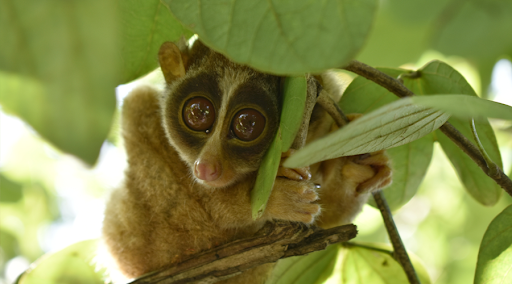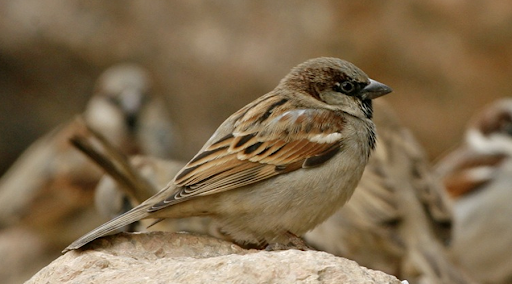What comes to mind when you think of Bengaluru? For those who navigated its streets two decades ago, the city conjures memories of a more serene and perhaps greener landscape with richer biodiversity. Contrastingly, newcomers to Bengaluru step into a bustling tech hub, often referred to as the Silicon Valley of India, where the narratives of the past intersect with the dynamic present.
The city, once affectionately known as the ‘Garden City’ for its pleasant climate and lush greenery, now stands at a critical crossroads at the mercy of relentless urbanisation. Recent occurrences have put the city’s ecological fragility into the spotlight, particularly with alarming leopard sightings causing widespread concern. As per a report, tragically, a leopard died when the forest department tried to tranquillise it while capturing it, in urban Bengaluru, epitomising the challenges of maintaining a balance between urban development and nature. Additionally, a surge in poaching incidents further exacerbates the crisis, underscoring the urgent need for a re-evaluation of our relationship with the environment.
In this blog, we delve into Bengaluru’s ecological journey, navigating through its past glory, the pressing threats it faces today, and the imperative for a sustainable future that preserves the city’s unique biodiversity.
Bengaluru’s Past: A Green Haven
As per a study on Assessment of Vegetation Cover of Bengaluru City, Bengaluru was estimated to have a vegetation cover of 30.1% in 2006. The city was home to a rich variety of flora and fauna, making it a biodiversity hotspot. In the past few decades, Bengaluru has seen significant changes in its biodiversity due to industrialization and urbanisation. The delicate balance that once existed between Bengaluru and its biodiversity now stands challenged by the pressures of modernization.
Another study on Springer.com states that in the late 19th century, Bengaluru was home to thousands of lakes and reservoirs, supporting a diverse range of birds, fish, amphibians, reptiles, insects, and micro-organisms. Today, despite having over 200 lakes within its boundaries, the landscape is marred by encroachments, pollution, and the drying up of water bodies due to rapid changes in land use. The central, older parts of the city have seen a significant decline in natural vegetation. The city’s flora now contains a large proportion of exotic species, with three out of four park trees coming from introduced species.
Lakes of Bengaluru are important habitats for 100 species of Birds like Spot-Billed Ducks, Spot-Billed Pelicans. Source: Citizen Matters
A checklist from 1999 documented the presence of 40 species of mammals, over 340 species of birds, 38 species of reptiles, 16 species of amphibians, 41 species of fishes, and 160 species of butterflies within a 40 km radius from the Bengaluru City centre. However, the growth and expansion of the city have led to the encroachment and pollution of water bodies, felling of thousands of trees, and large scale conversion of open areas and parks into commercial, industrial, and residential settlements.
The Present Scenario: A Declining Ecosystem
Fast forward to the present day, and Bengaluru’s once-thriving vegetation cover has experienced a notable decline, plummeting to 26.1% in 2019, signifying an overall reduction of 4% according to a study on Springer. This reduction is a cause for concern as it showcases the impact of urbanisation on Bengaluru’s green cover. The Living Planet Report 2020 highlights that biodiversity loss is at its worst globally. In India, 3% of bird species face extinction; 19% of amphibians are threatened or critically endangered; over 12% of wild mammal species are threatened with extinction. As per another report, Twenty years ago in Bangalore, there were 25,000 sparrows per square kilometre, a number that has dwindled over the years, marking a concerning trend in the city’s biodiversity.
Shrinking Habitat Led to Disappearance of Neighborhood Sparrows
The loss of biodiversity is not limited to fauna. The city’s flora has also been affected, with many native plant species being replaced by exotic species due to urban landscaping practices. This has led to a decrease in the diversity of plant species in the city, impacting the overall ecosystem. Several species that were once common in Bengaluru have disappeared due to urbanisation. The Slender Loris, a nocturnal primate that was once commonly sighted in the city, is now rarely seen. Similarly, several species of birds, including the Indian Pitta, Brown Hawk Owl, and Black-winged Kite, which were once common sightings, have become increasingly rare.
Widespread loss of green cover wiping out Slender Loris.
Source: Citizen Matters
The decline in green cover has also led to a rise in the city’s temperature. According to a report, Bengaluru has witnessed a 1.5°C increase in its average temperature over the last 20 years. This increase in temperature, coupled with the loss of biodiversity, is a cause for concern as it affects the city’s overall ecological balance. The present scenario of Bengaluru’s biodiversity is a wake-up call for urgent conservation efforts. The city’s declining ecosystem highlights the need for sustainable development practices that balance urbanisation with the preservation of biodiversity.
The Future: Paving the Path for Sustainability
Looking towards the future, it is imperative to prioritise sustainable development as the linchpin for safeguarding Bengaluru’s precious biodiversity. Preserving the biodiversity of Bengaluru requires a multi-pronged approach that includes policy changes, conservation efforts, and increased public awareness.
The Biological Diversity Act, 2002, provides a legal framework for the conservation of biodiversity, sustainable use of its components, and fair and equitable sharing of the benefits arising out of the use of biological resources. The BMCs are tasked with eco-restoration of local biodiversity, protection of heritage trees, traditional varieties/breeds of economically important plants, and animals, etc.
The BMCs in Bengaluru have had their limitations in the past, but with the recent resurrection of the Bengaluru BMC, there is hope for better conservation efforts. The goal is to involve the local community in managing its own natural resources and ensuring sustainable use of biodiversity.
However, the implementation of these laws and regulations needs to be strengthened. For instance, the enforcement of regulations to prevent deforestation and illegal hunting can play a crucial role in preserving the city’s biodiversity.
To achieve a sustainable future, it is vital to:
- Encourage local community participation in biodiversity conservation.
- Strengthen the role of BMCs in implementing conservation activities.
- Increase awareness about the importance of biodiversity and the need for its conservation.
- Implement stricter laws and regulations to curb illegal hunting and deforestation.
- Promote sustainable urban development that minimises damage to the ecosystem.
Conservation efforts need to focus on protecting and enhancing the city’s green spaces. A study published at Journals, revealed that Bengaluru’s neighbourhood parks, despite their small size, can serve as stepping stones that facilitate the movement of birds, butterflies, and insects between larger green areas india. These parks recorded 55 tree species, 45 species of birds, 41 species of butterflies, and 68 morpho species of insects. Such small green spaces are essential systems that help support biodiversity within the city.
Public awareness is another crucial aspect of preserving biodiversity. Citizens need to be made aware of the importance of biodiversity and the role they can play in its conservation. For instance, they can contribute by making their backyards and balconies attractive for birds, bees, and butterflies. Growing curry leaves, lemon plants, and palms can support butterfly caterpillars, while trailing some passion flowers would attract sunbirds.
B.GREEN: A B.PAC Initiative
The B.GREEN initiative of B.PAC aims to improve Bengaluru’s environmental sustainability, socio-economic upliftment, climate resilience, and quality of life. The initiative brings together professionals and civic leaders from all over the city to cooperate and coordinate grassroots action through our B.CLIP leaders and community partners.
In the pursuit of transforming Bengaluru into the world’s greenest megacity, B.PAC developed the Bengaluru Sustainability Manifesto—a meticulously crafted 10-year plan designed to confront the most significant global challenges of the century. Beyond being a response to pressing global concerns, this manifesto seizes a colossal economic opportunity, promising a transformative enhancement in citizens’ quality of life. The vision outlined in the Bengaluru Sustainability Manifesto for 2030 is a bold plan, charting a course for the city’s sustainable development over the next decade. Moreover, B.PAC works with grantees, experts, policymakers, and city civic leaders to implement constitutional strategies pertaining to sustainability. A closer look at the impact numbers:
Impact Created:
Trees planted: 7000+
Lake rejuvenation projects: 04
City clean-up drives: 200+
Comprehensive ward waste management plans: 20
Educational institutions engaged:
College: 20
School: 50
The Bottomline:
As we conclude, threading through Bengaluru’s rich ecological past and assessing the challenges of the present, envisioning a sustainable future becomes imperative. The responsibility now lies on the shoulders of a collective endeavour, urging us to embrace ecologically conscious practices, champion green initiatives, and foster a seamless coexistence between Bengaluru’s urban sprawl and its intrinsic natural heritage. It is through these combined efforts that we can envision and work towards securing a sustainable future for this vibrant city, safeguarding its distinctive biodiversity for the benefit of generations yet to come.
Sources:
- https://journals.plos.org/plosone/article?id=10.1371/journal.pone.0215525#ack
- https://india.mongabay.com/2020/09/bengalurus-biodiversity-management-committee-is-back-in-action/
- https://timesofindia.indiatimes.com/city/bengaluru/bluru-temp-up-1-5c-in-20-yrs-expert/articleshow/101605168.cms
- https://www.newindianexpress.com/cities/bengaluru/2013/mar/20/where-have-the-sparrows-gone-460139.html#.UypxH_mSwnE
- https://earth.org/data_visualization/biodiversity-loss-in-numbers-the-2020-wwf-report/
- https://link.springer.com/chapter/10.1007/978-94-007-7088-1_7
- https://link.springer.com/article/10.1007/s12524-020-01259-5
- https://timesofindia.indiatimes.com/city/bengaluru/after-15-hr-op-leopard-shot-dead-in-bluru/articleshow/104901459.cms
- https://images.citizenmatters.in/wp-content/uploads/sites/14/2021/09/24044308/Reporters-Manual-Bengaluru-Biodiversity_Final-1.pdf







